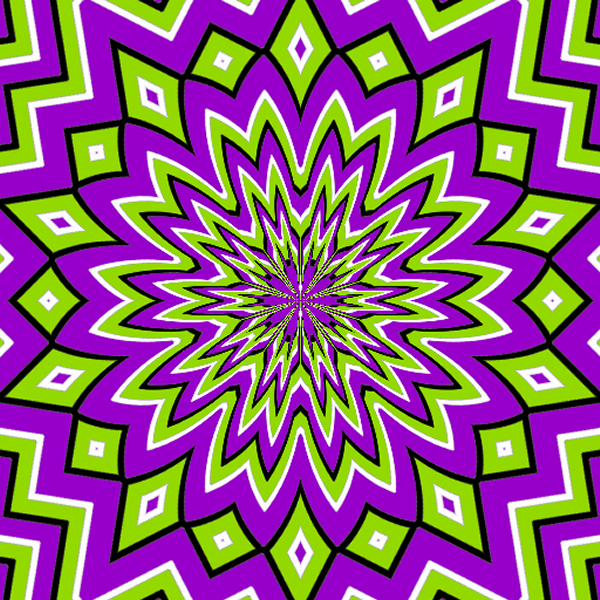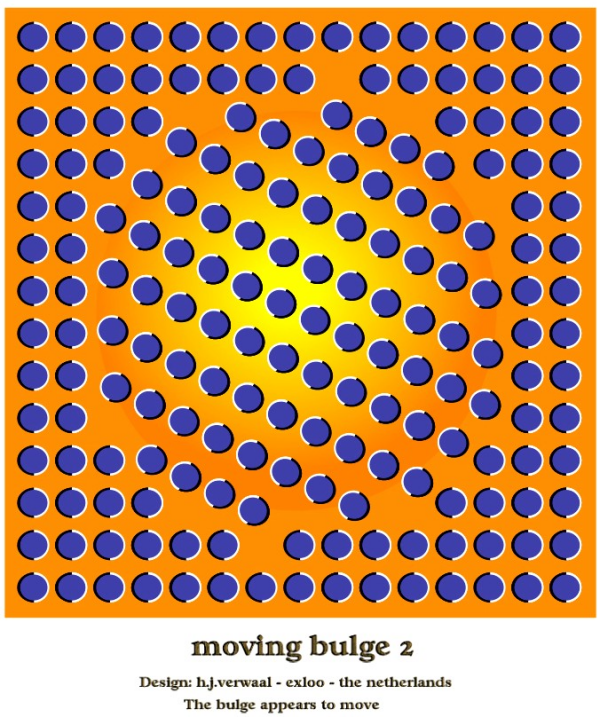AKA Peripheral Drift Optical Illusion is characterized by anomalous motion that can be observed in peripheral vision.
Warning: This page contains some works of "anomalous motion illusion", which might make sensitive observers dizzy or sick. Should you feel dizzy, leave this page immediately.The above is a serious warning that I borrowed from the master of anomalous optical illusions, Professor Akiyoshi Kitaoka, of Ritsumeikan University, Kyoto, Japan.
Professor Kitaoka wasn't the first to notice that certain images appear to move if viewed in your peripheral vision. But he has studied the effect and perfected the creation of these optical illusions.
The first anomalous motion optical illusion is one that I created.

Sea Sickness
by Walter Anthony
is licensed under a Creative Commons Attribution-NonCommercial-ShareAlike 4.0 International License.

(c)2007
Keep in mind that this is a static image. It is not animated in any way. but as your vision moves back and forth the center area seems to be moving toward the center (contracting) and the outer edges seem to be moving away (expanding) from the center. Also worth noting is that if you fixate on a point in the center and don't move your eyes this anomalous motion will stop.
The next optical illusion is by the professor himself. Take a look at these snakes, do they rotate? For an even more amazing experience click on the image. It should open in a new window and take up the entire screen. Remember this image is not animated.

"Rotating snakes #9"
Each snake appears to rotate.
Copyright A.Kitaoka 2004 (October 7)
Used w/permission
Printer Alert----> If you have access to a color printer this illusion works on paper too! Print out a large version to amaze your family or friends.
Explanation----> Professor Kitaoka has provided a more detailed explanation of the peripheral drift illusion in PDF.
Finally the last example is from a friend, Herman Verwaal from Exloo, Netherlands. Since he has retired he has taken to creating optical illusions of all types. Here is one of his anomalous motion optical illusions. Notice the attempted motion this time is side to side (lateral).

Herman Verwaal
(c)2008
Used w/permission
Well there you have examples of three forms of anomalous motion optical illusions.
1. Expanding/Contracting
2. Rotational
3. Lateral
A quick thank you to Professor Kitaoka and Herman Verwaal for allowing me to share these illusions with you.
Continue reading the full article...








 I'll take this one step further and let you know that the
I'll take this one step further and let you know that the 











